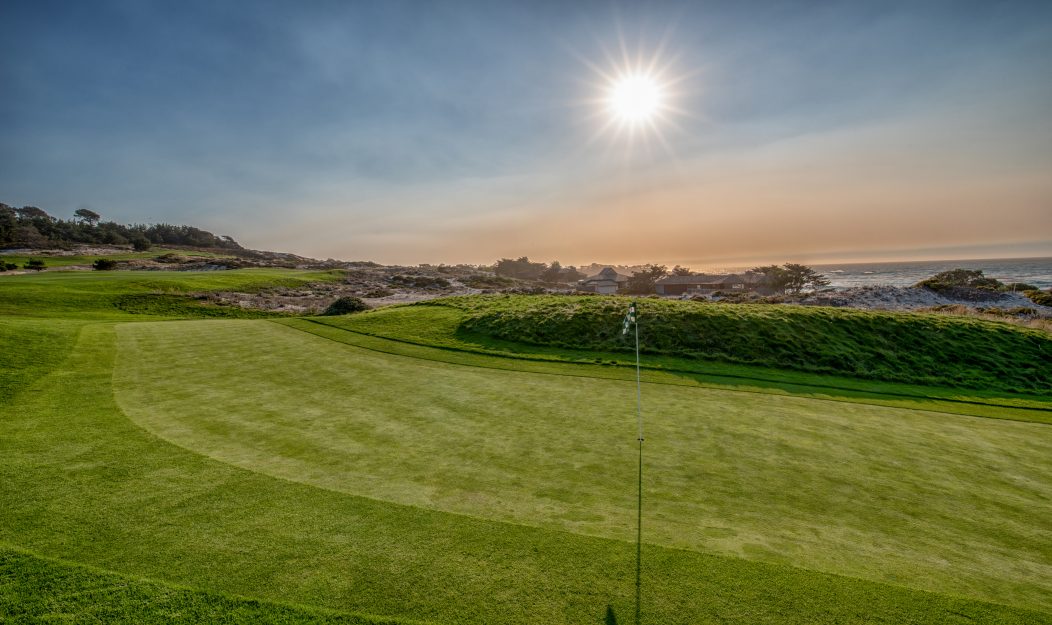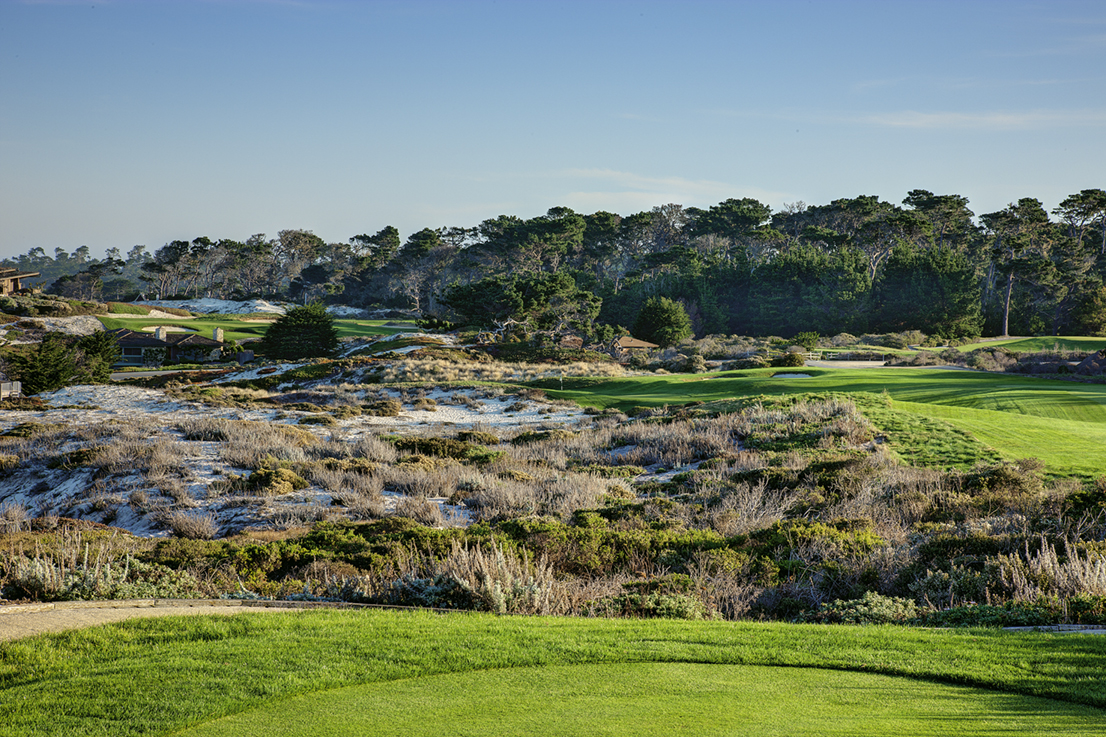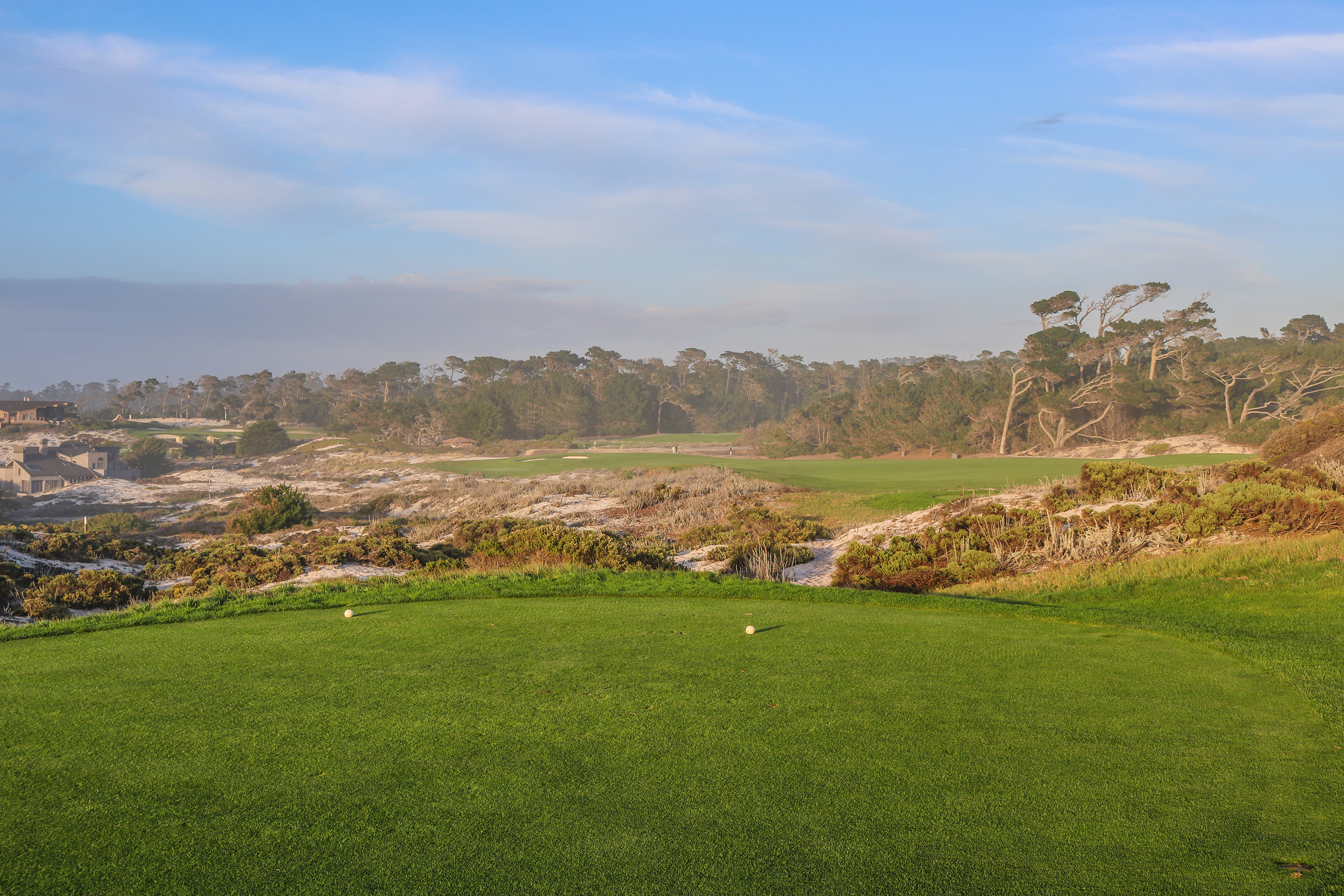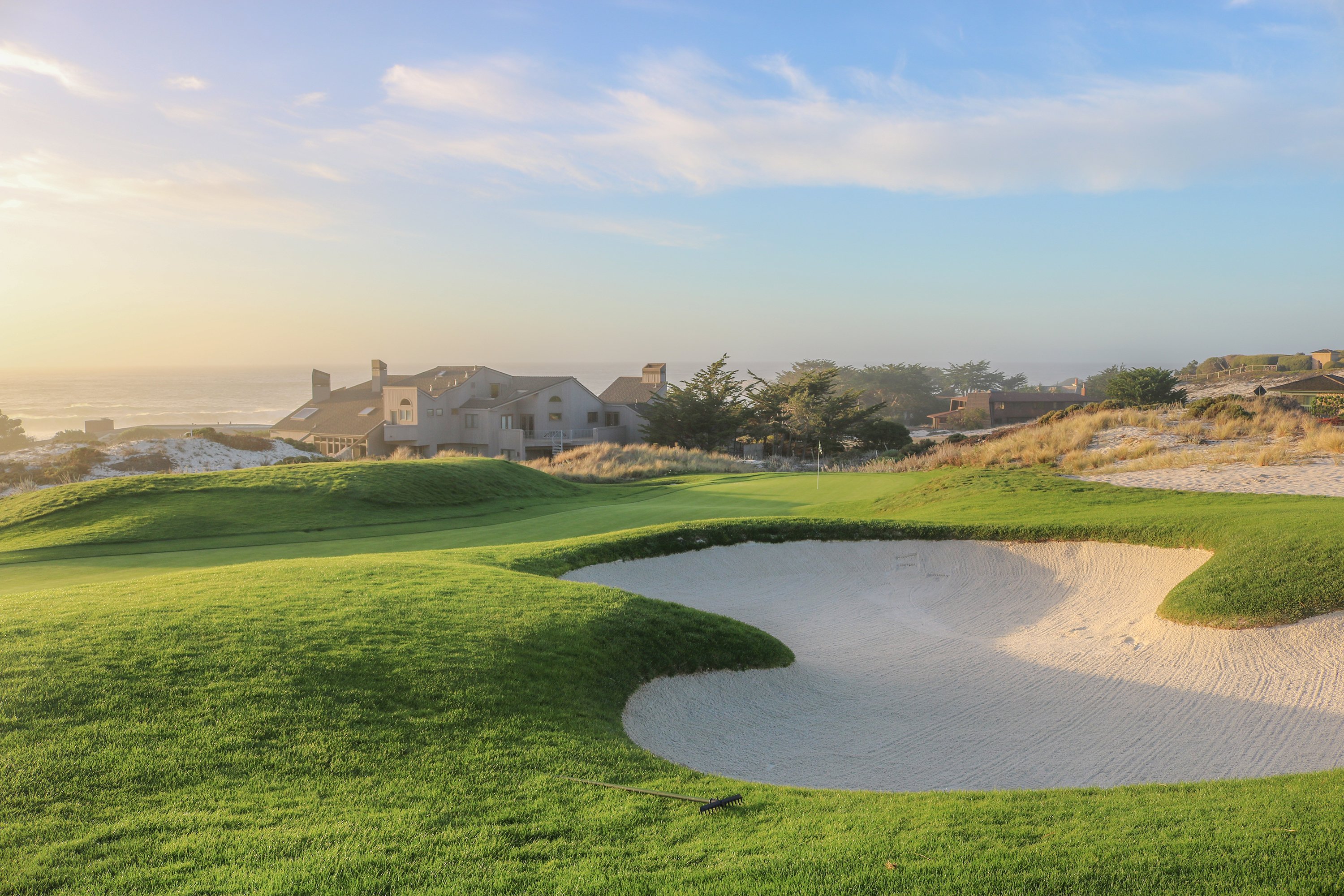How to Play the Wild 4th Hole at Spyglass Hill
Robert Trent Jones, Sr. — a man who worked on more than 400 golf courses in his lifetime — calls No. 4 at Spyglass Hill his favorite par-4 he’s ever designed.
But he didn’t say it was his favorite to play.
“I’ve seen so many disasters there,” says two-time AT&T Pebble Beach Pro-Am champ Brandt Snedeker. “I’m just trying to hit an iron on the fairway, an iron onto the green, and get out of there with a par.”

"I'm just trying to hit an iron on the fairway, an iron onto the green, and get out of there with a par." - Brandt Snedeker
The setting on the tee box is absolutely stunning — a peek into Cypress Point Club behind you, barking Bird Rock to your left, and waves of dunes in front of a camouflaged green straight ahead.
But then you have to pull out a club and play the boomeranging short par-4 flanked by sandy trouble.

The beginning of the fairway on the 370-yard hole is generous enough, but the shape of the green forces you to think more aggressively off the tee. At its most forgiving, the slithering fourth green is just 10 paces wide, while it slides between two dunes for 55 yards. It’s a daunting shot with a wedge. If you hit a cautious shot off the tee and leave yourself 180 yards or more, hitting the green feels like a hole-in-one — especially if the ocean breeze is up.
The approach shot is so intimidating that the likes of Dustin Johnson, Phil Mickelson, John Daly and Vijay Singh have occasionally eschewed it all together, instead taking aim at the green some 310 yards off the tee. (It’s 290 yards to carry the final dunes short of the green.) Johnson’s play is to aim at the right edge of the greenside bunker, and draw it in. When he won in 2009 and 2010, he hit drives just short of that bunker, fed his pitch shots down the green, and tapped in for birdie.
But Johnson also fell short of a three-peat in 2011 because of the fourth hole. He hooked his drive in the dunes, hacked around and eventually took an 8, which knocked him out of contention.
Even so, Johnson still thinks about going for the green — because that green is so scary.
So what do the rest of us who can’t carry a baby draw 290 yards do? We asked Pebble Beach Golf Academy Director of Instruction (and former Spyglass Hill Head Pro) Laird Small to help us out:
So What’s the Strategy Off the Tee?
The stronger the player, the more you want to challenge the hole. But the more you challenge the hole, the more trouble you can get into. It really makes you focus.
At the widest part of the fairway, you are 160-170 yards into the green. That’s fine normally, but that green is so small for that length of shot. Hitting a 7-iron or a 5-iron into that tiny green is tough.
The shorter the club you can hit into the green, the better your scoring average is going to be. But what happens is the fairway gets very narrow the farther you drive the ball – as narrow as 20 yards.

The shorter the club you can hit into the green, the better your scoring average is going to be.
The aggressive line is to aim out at the first green in the distance with a driver. The safer play is to hit a 220-230 shot at the set of grey power boxes through the fairway, which should leave you less than 150 yards to the green.
If you have between an 8-iron and a wedge, that changes how you attack your approach shot. You can play offensive vs. defensive.
When the flag stick is on the lower half, that’s really the easier second shot. You have the entire green complex to land the ball into.
And How Do You Hit That Green?
Players think intuitively, you want to land the ball short and bounce the ball down there. But the target is so tiny, it’s actually a more difficult shot. You’re making the wrong choice. You need to have the courage to fly the ball all the way to the flag.
When you’re playing the hole, you’ll see the yardage markers to the middle of the green, and middle of the green is right where that fold in the green is. So you’ll want to hit it middle-of-the-green yardage, or maybe a little more, to hit it to that bottom flag.
When the flag is up top, you have to play it short, because the green pitches away from you, and the ball is going to roll forward. If the flag stick is at 145 yards and just short of the plateau, you probably have to hit it 130 yards. You don’t want to hit it 140 yards and have it roll down the slope. Three putts – and even more – are very common from there.
Is There Any Place to Miss Your Approach Shot?

The best miss is to leave it short and to the right, where you can pitch it on the green. The bunker does come into play, but if you’re unsure, leave it short and pitch it on. Everything funnels to the hole. The green will funnel the ball all the way down, and you’ll have a short attempt to save par. Playing short is a really good strategy. Most people don’t see that or think about it.
Ready to put these tips to the test?